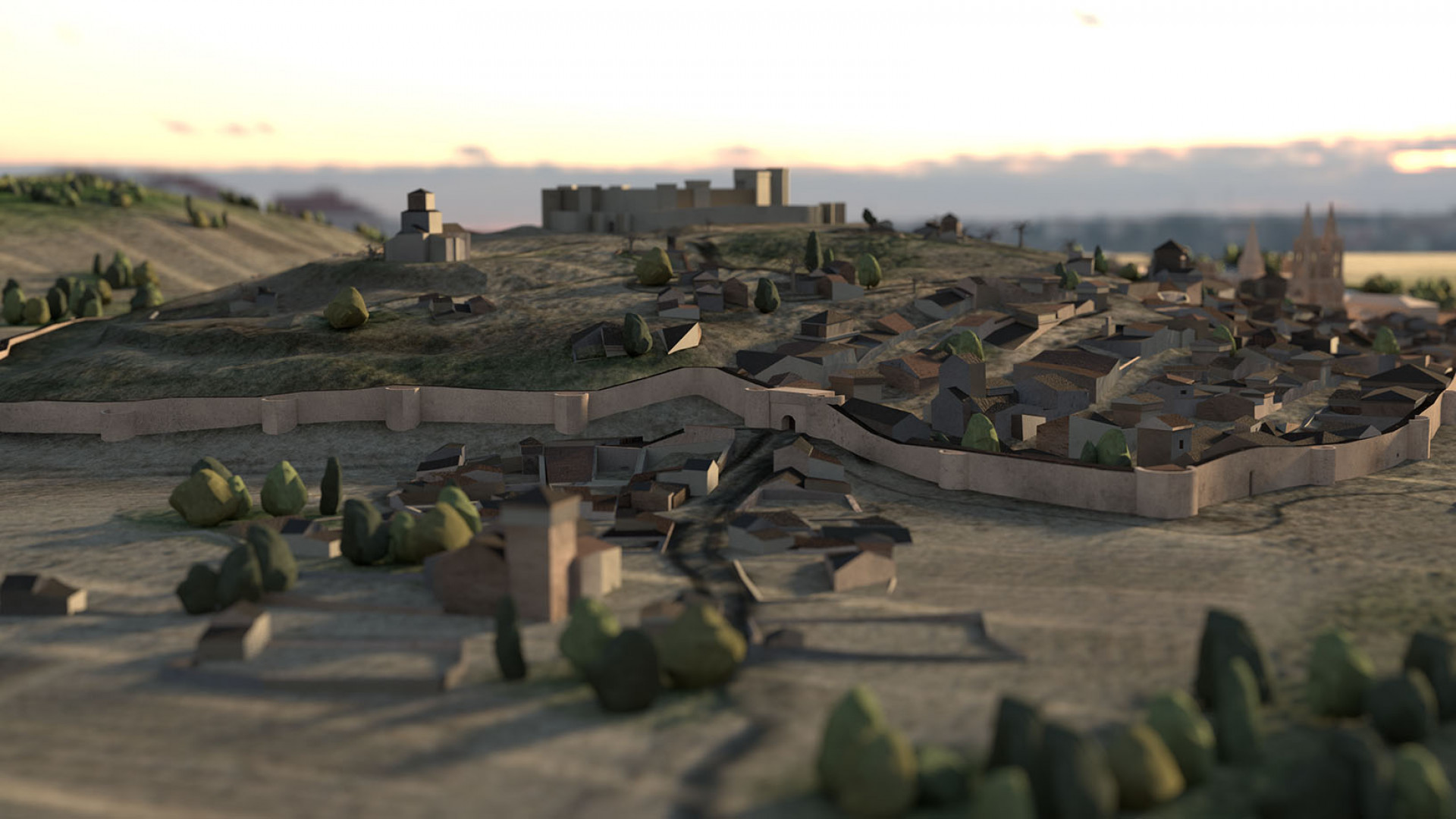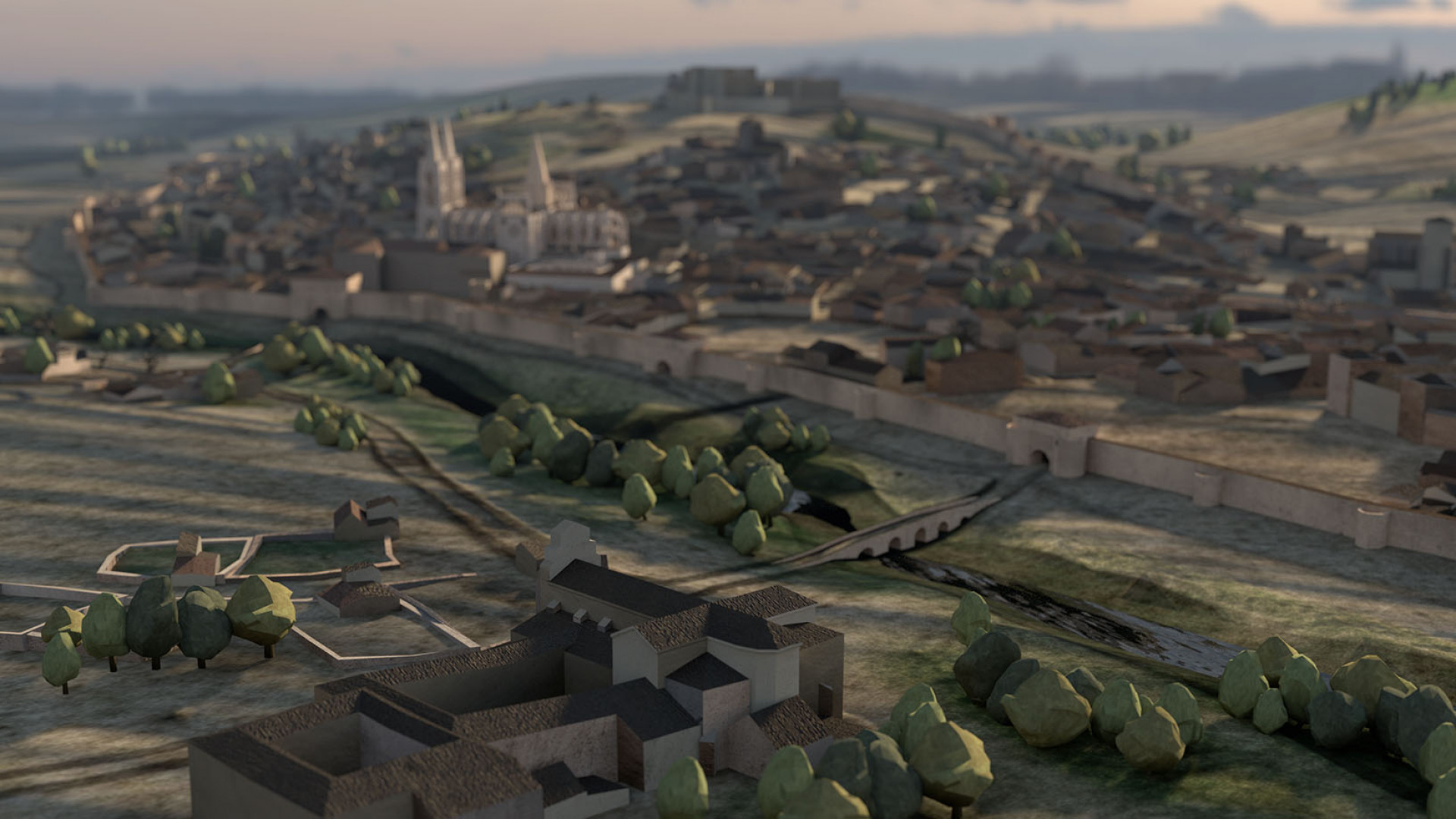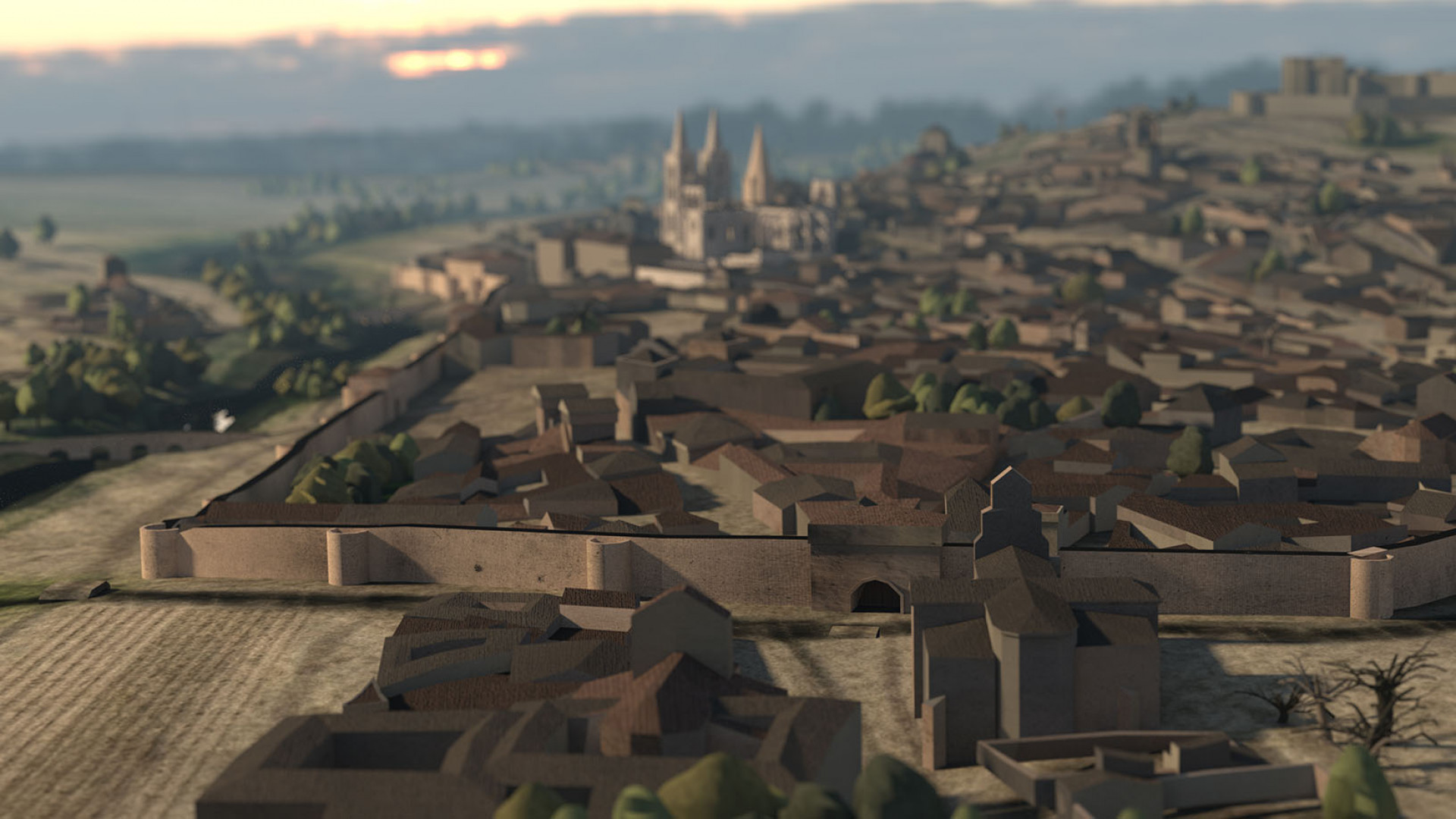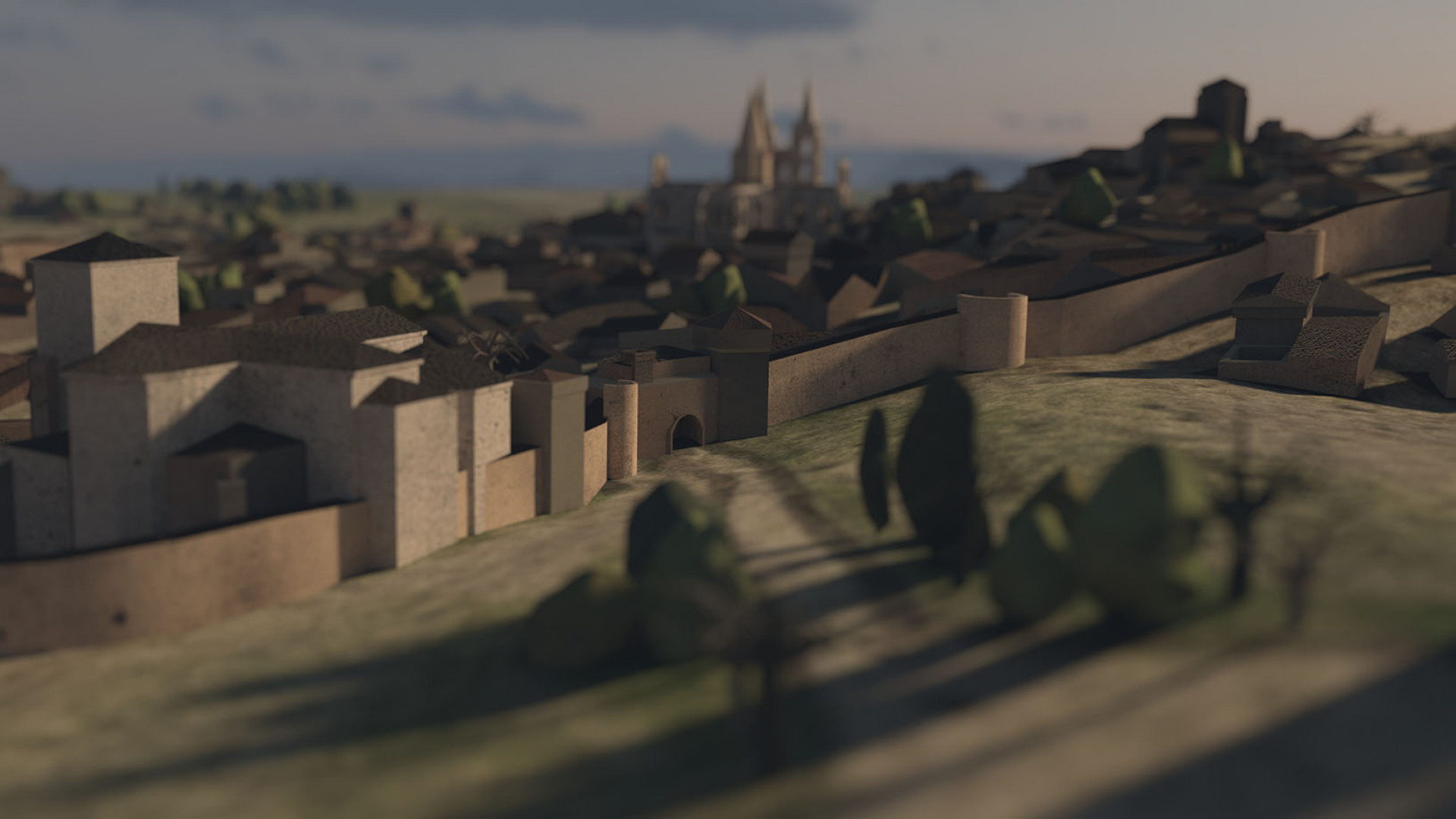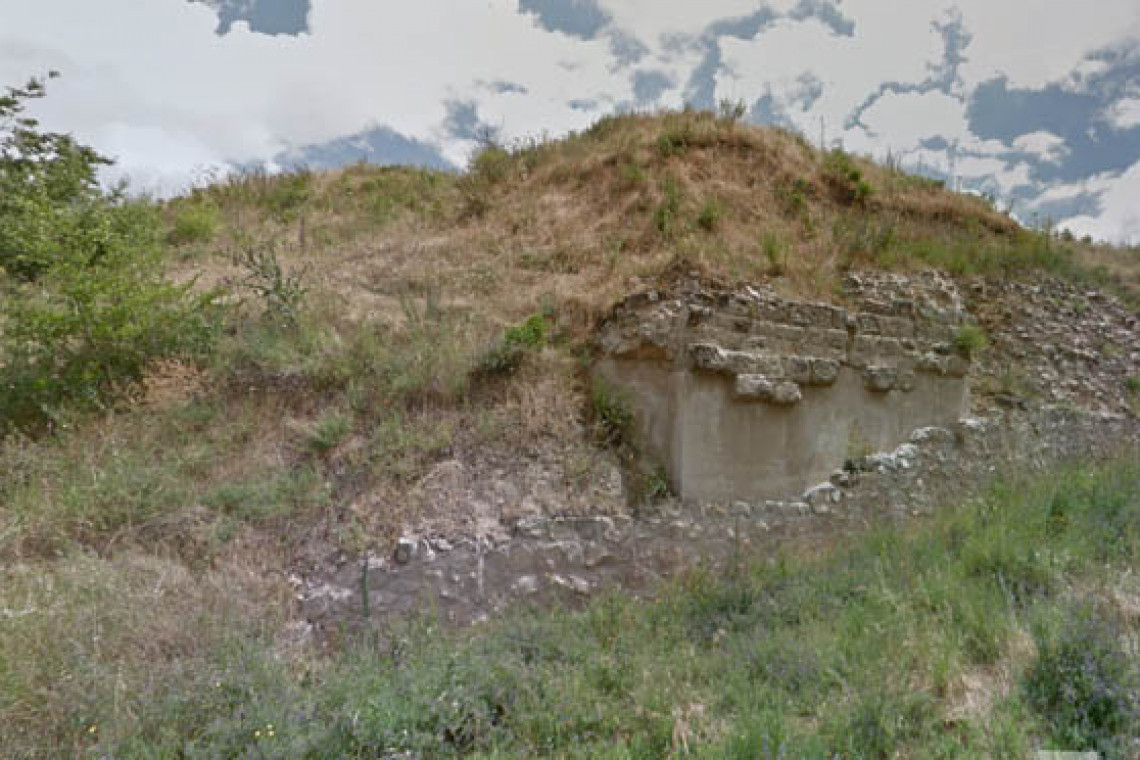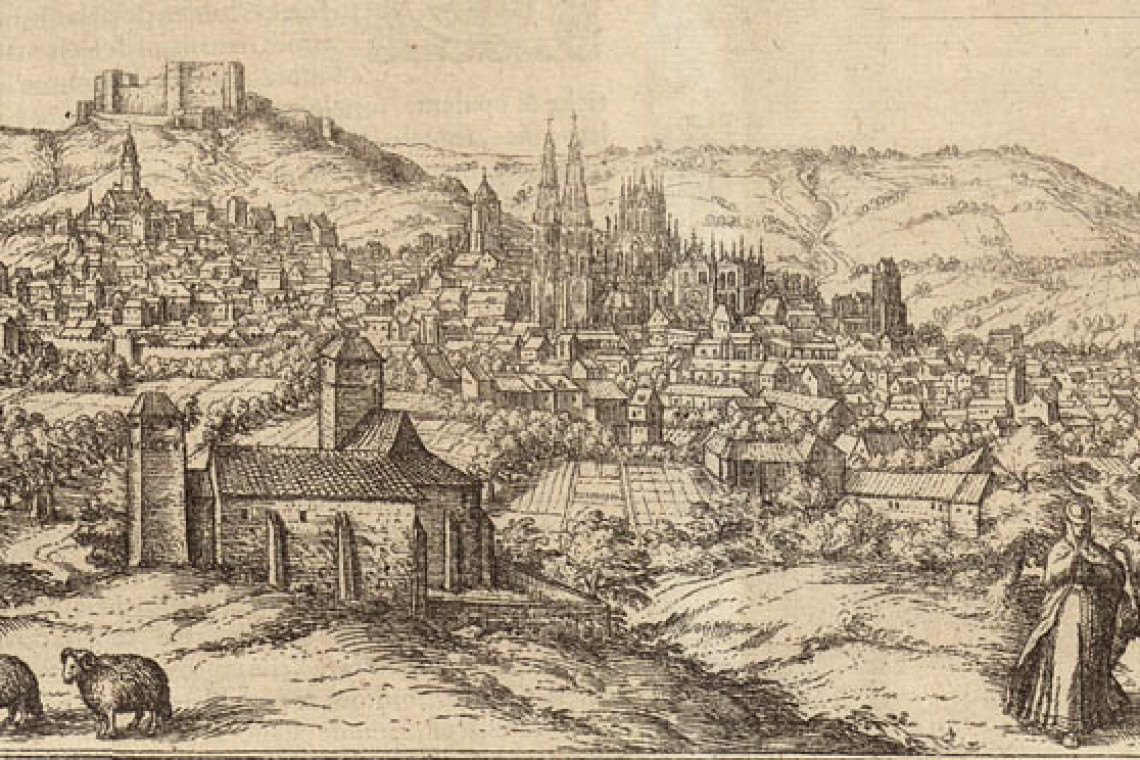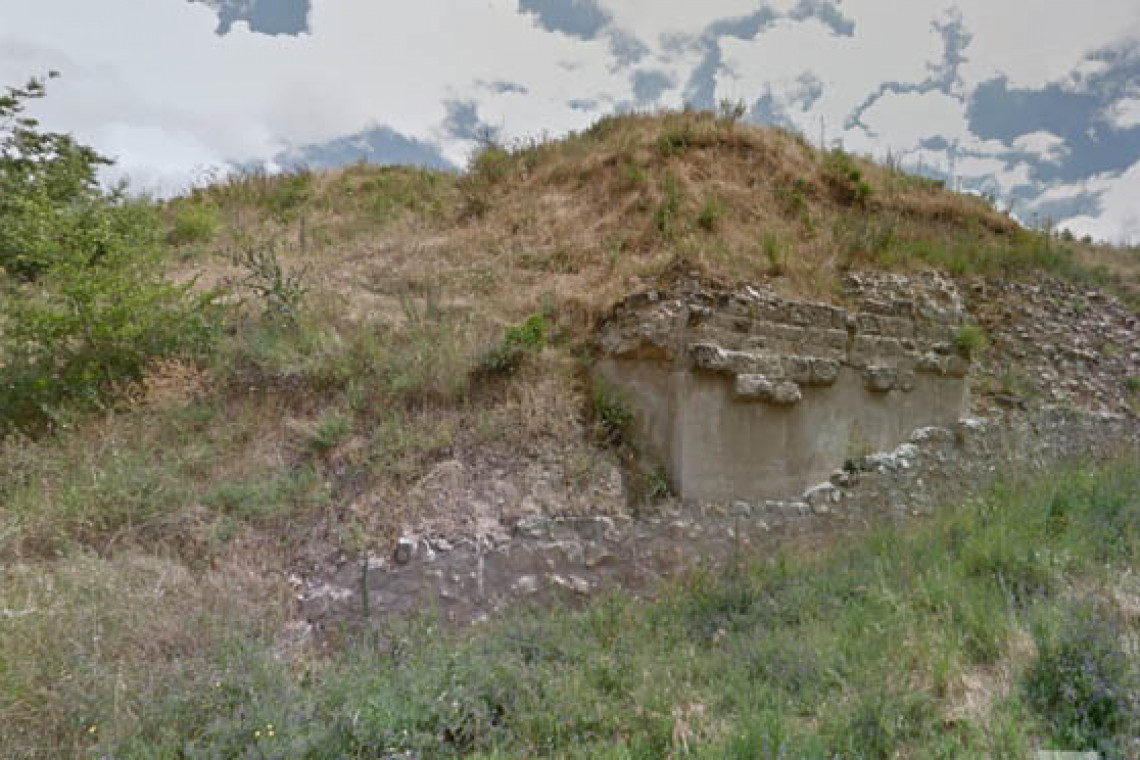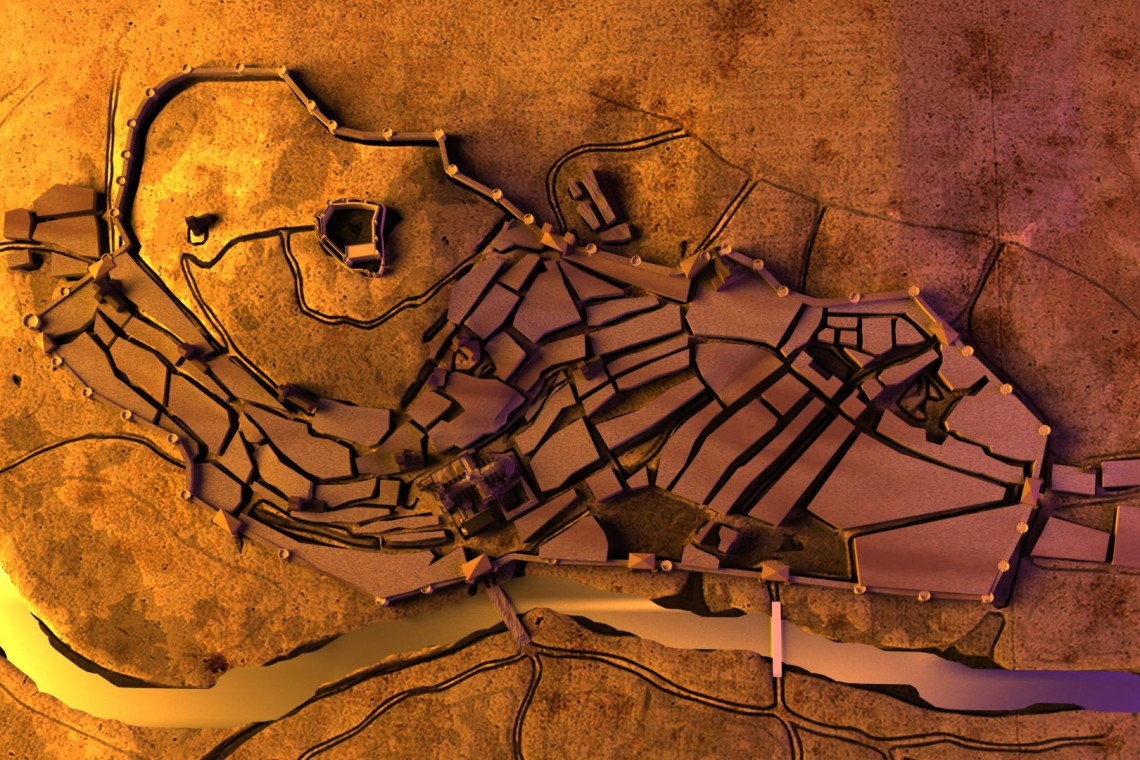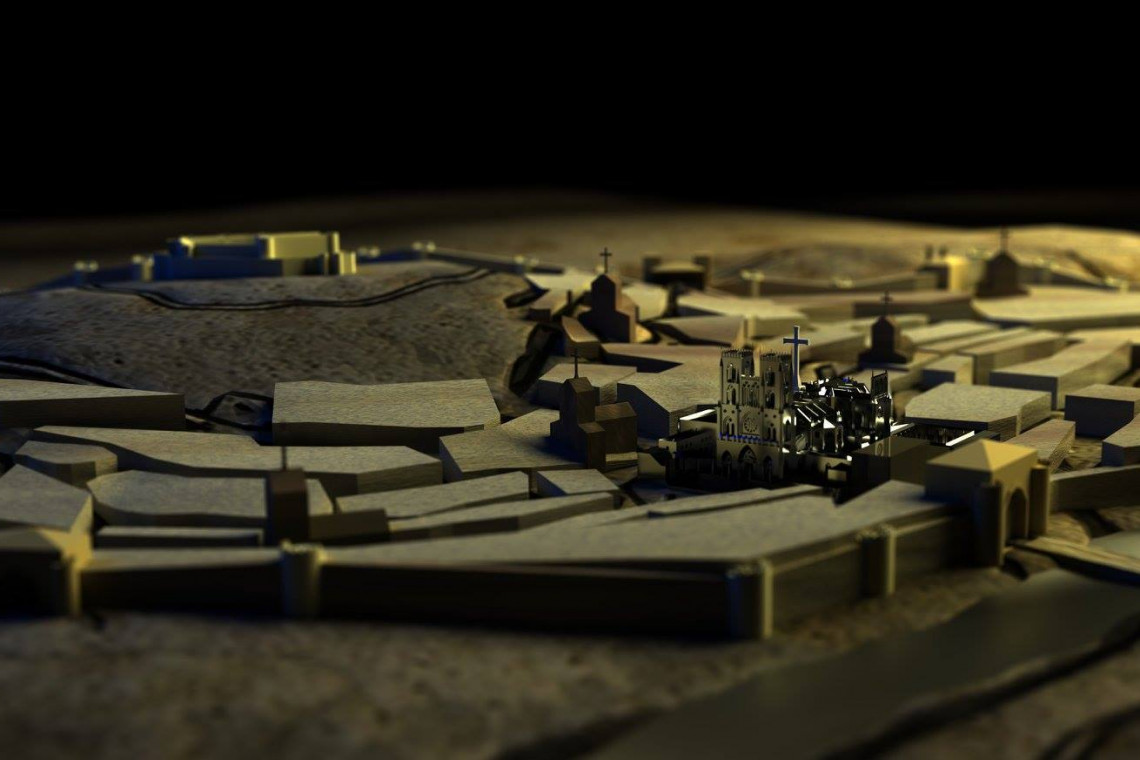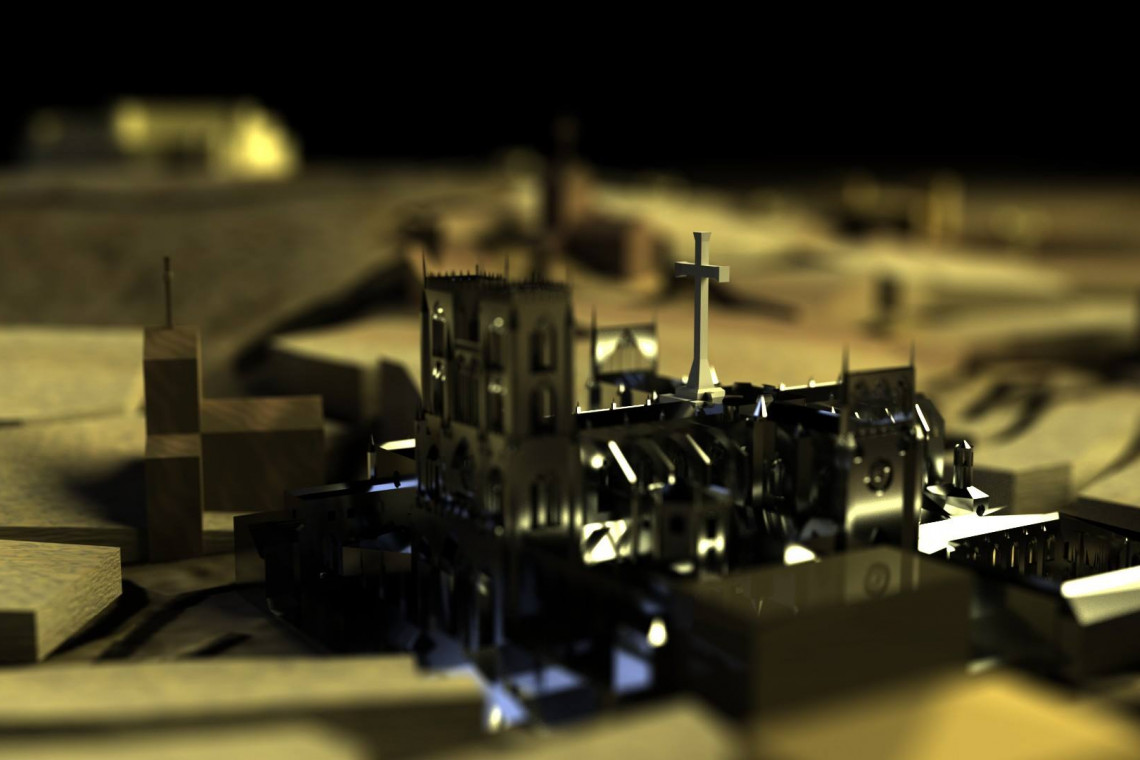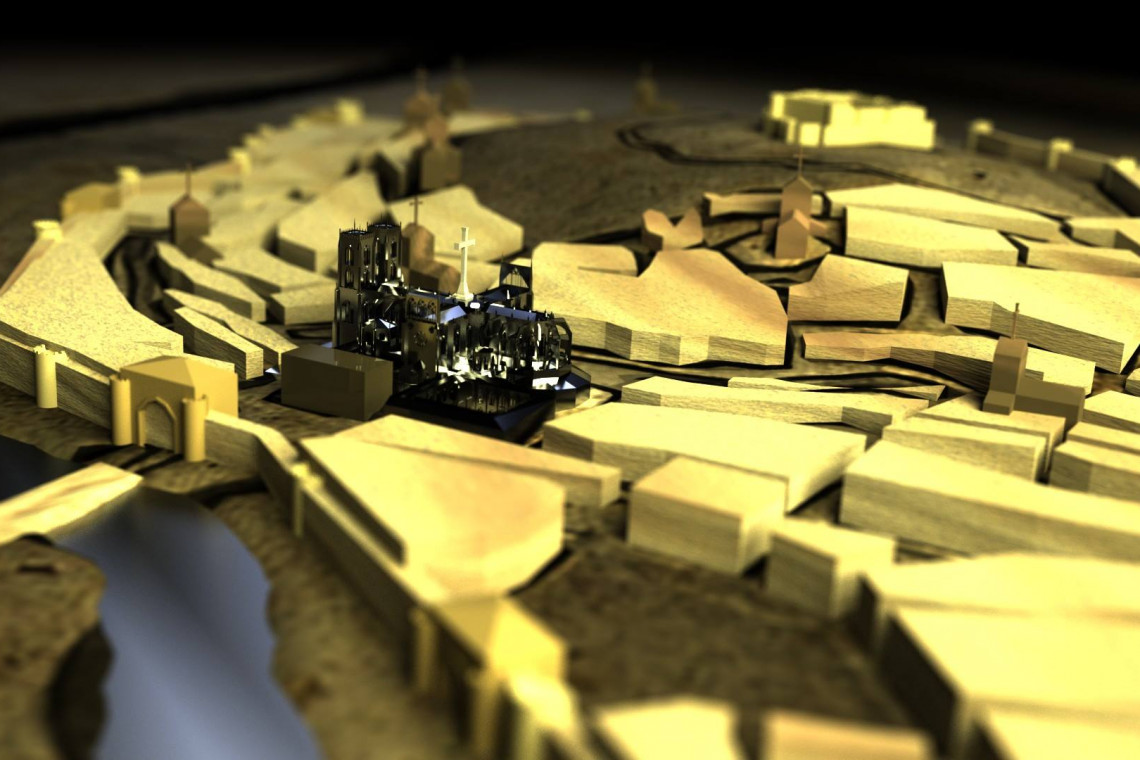The city of Burgos in the 15th century
A project of virtual reconstruction of a city in full splendour in the face of a change of era. This is our hypothesis about how the Head of Castile was at the end of the Middle Ages.
PROJECT IN DEVELPMENT
.
.
Burgos: a city in full evolution
Burgos in the 15th century was a city of notable importance in the Crown of Castile, where a good part of the layout and unique buildings of the present day could already be recognized. After several years analyzing possibilities of converting the city into a digital model, we decided to create a volumetric reconstruction that would allow us to understand the urban distribution.
¿Why are we working on this project?
Research
Our group is dedicated to research on the didactic and informative capacities of new technologies. All our work and results are available to academics and companies who wish to use our methodologies.
Our city
We have been developing different projects for a decade, always keeping an eye on our city, and after gaining experience we have decided to launch ourselves to complete this model.
Dissemination
We believe, from our experience, that the creation of such a model can greatly help the capacity to understand the evolution of the city.
Virtual Reality
This digital model will be available to be visualized with virtual reality. We are currently working on its integration and revision.
Historical truthfulness: our priority
Our commitment is to history and heritage. We have developed an extensive research phase that has combined documentary review, analysis of old engravings and plans, and available topographic and photogrammetric references to search, at all times, for the greatest historical truthfulness. We are currently still in the historical review phase: we seek to verify as much as possible that our model is as faithful as possible to reality.
The 3D modeling phase
The first decision was the level of detail we wanted to achieve. We made different tests and decided to make a synthesized model, in which the differences of the singular buildings and a low detail in the urban layout were perceived. We took this decision because less detail would mean a decrease in the didactic capacity of the model, and more detail would mean having to elaborate in excess, since the information gap is so wide that the historical figuration would be excessive (we would have a result of more visual realism but less historical realism). This decision is part of our line of research: the decision between visual realism and historical truth; depending on the amount of information and the destination of each project it is convenient to choose a level of personalized detail. For more information on this area, please consult the Seville Principles.
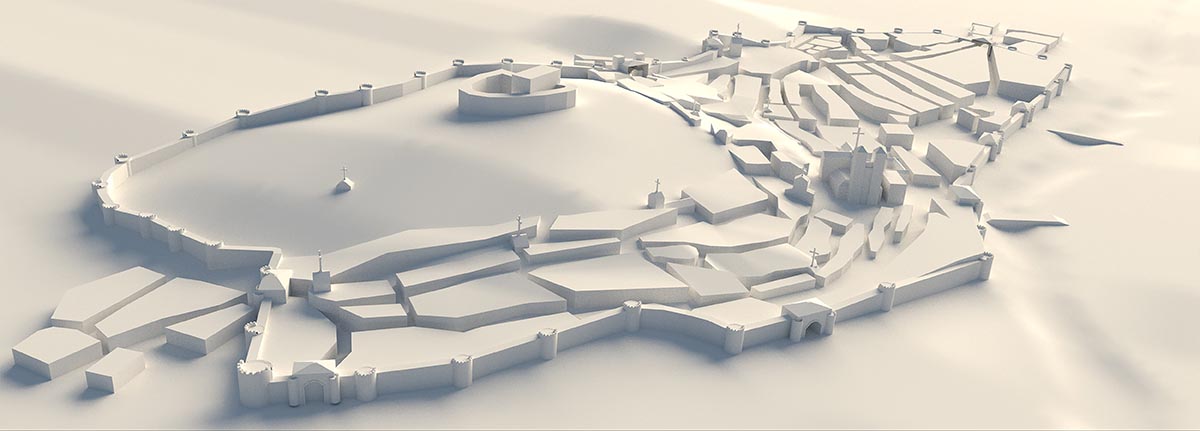
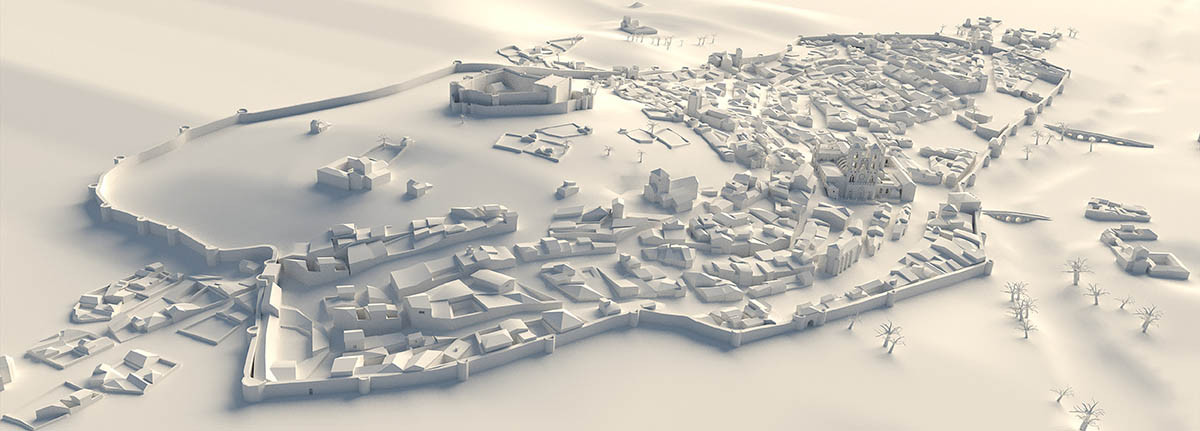
Volumetric modelling
The first step was to perform a volumetric modeling of the urban layout (raising the areas with houses on the background and highlighting only the unique elements. This model was used to test the didactic capabilities and look for what could be the visual effect of the final model.
Homes, corrals, unique buildings
The next step was to apply the selected level of detail and model each building, always looking for effectiveness and efficiency, using the minimum amount of resources possible for the desired finish
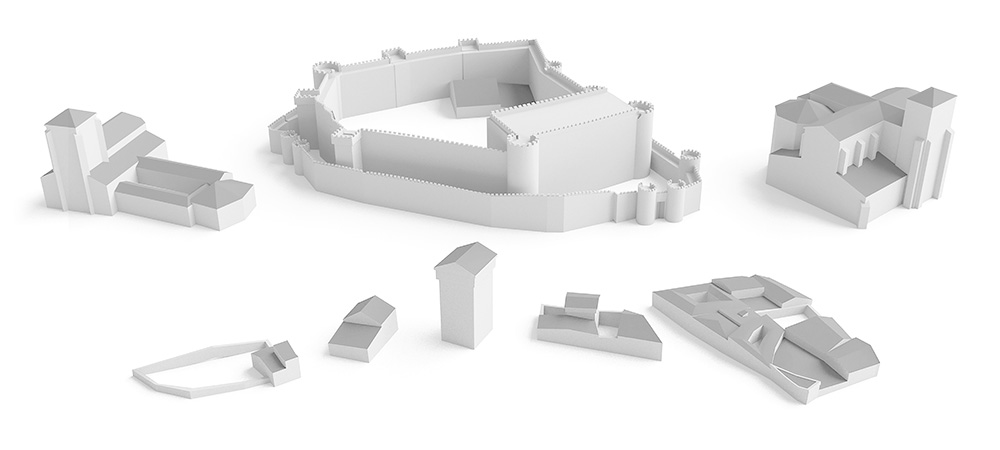
Texturing, lighting and rendering
This digital model is in a historical review phase, validating street by street and looking for the most correct hypothesis. Meanwhile, we carry out finishing tests, lighting the scene and rendering with Blender Cycles.
